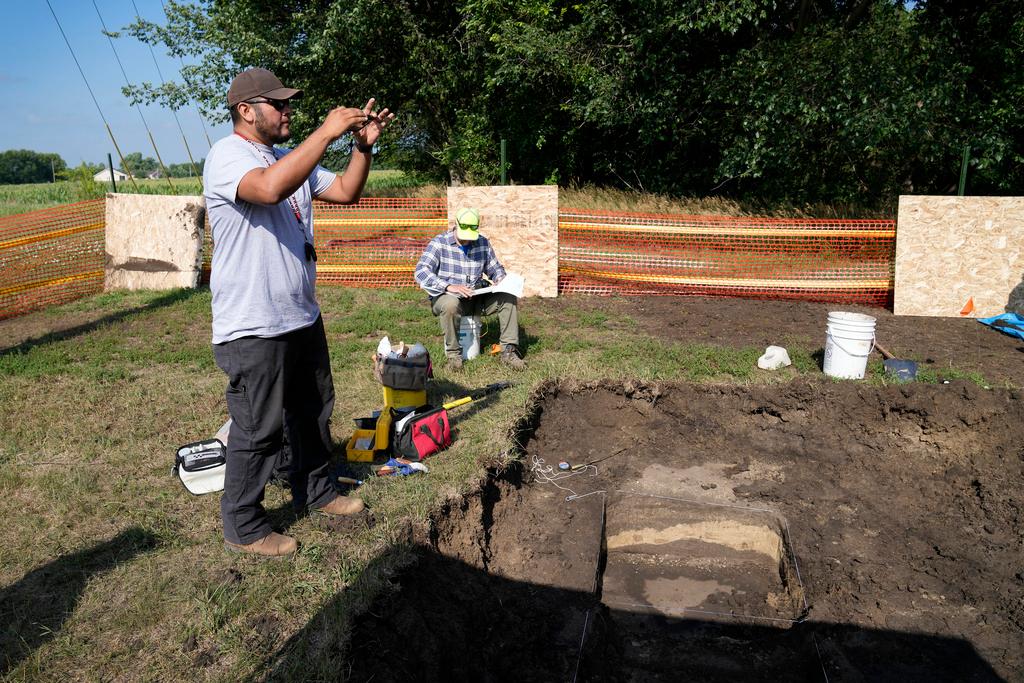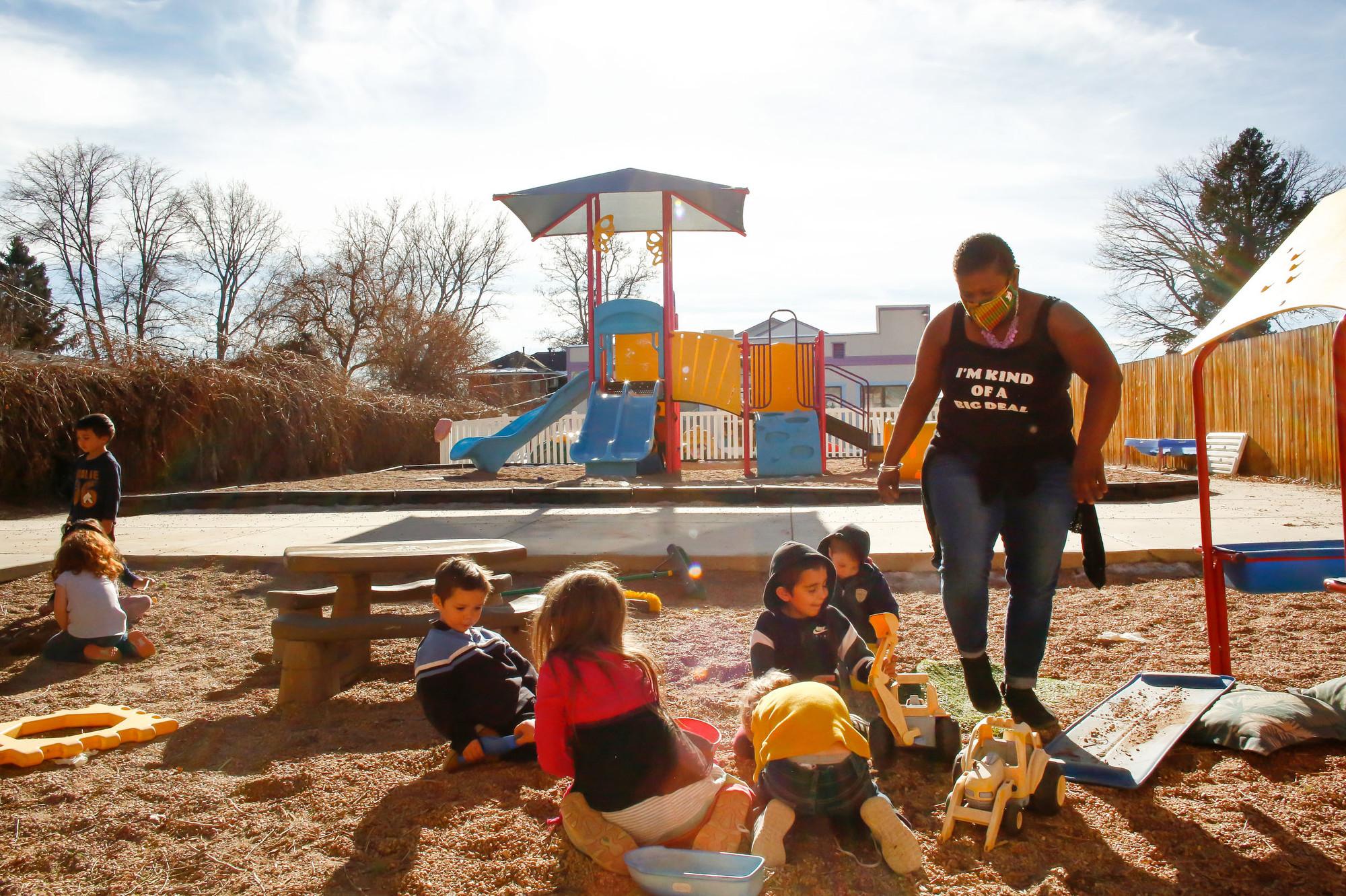
Vivian Darby, 36, is finally where she’s supposed to be. The funny, gregarious Colorado native is playing in a big sandbox on a sunny winter day.
She’s surrounded by a posse of young children.
She sings with them.
Runs with them.
Screams with them.
Gently admonishes them.
And does a whole lot more in the highly complex job of an early childhood educator.
It’s taken many years, but ironically, Darby has finally landed in a profession — one that is suffering from a critical shortage of workers. The number of children under age four in Colorado is expected to increase by 22 percent by 2026. Yet the field that cares for and educates the state’s youngest children can’t attract enough workers.
The 2018 Colorado Workforce Talent Pipeline Report highlighted a 44 percent increase in openings in early childhood education and care.
Low pay, challenging working conditions, and difficulty accessing traditional higher education pathways plague the field. Advocates say it will take a number of innovative, new post-secondary pathways for Coloradans to join that workforce and avert an even bigger crisis. Darby discovered one pathway that has given her a pay boost, higher credentials and the information and education she needs to succeed in her early childhood career.
An apprenticeship.
Red Rocks Community College’s Childcare Development Specialist Apprenticeship is a two-year program. It’s also the only federally registered apprenticeship for early childhood education in Colorado. It requires 306 education hours and 4,000 hours of on-the-job learning with a mentor teacher but may be reduced based on previous education and experience. It’s attracted 17-year-olds fresh out of high school all the way up to one 66-year-old.
What makes an apprenticeship unique compared to simply taking early childhood education classes is this: It lets students earn while they learn because they’re employed in child care centers. They get wage boosts throughout the program. That addresses a major barrier. Most entering the field can’t afford to stop working to learn and move up the ranks. Secondly, apprentices get continual coaching at their workplace. Career support continues even after they complete the apprenticeship.
“It takes a village to help a teacher,” said Julia Brink, quality improvement coordinator in the department of Child Care Innovations at Red Rocks Community College. “It takes a village to become a well-rounded caregiver and provider.”
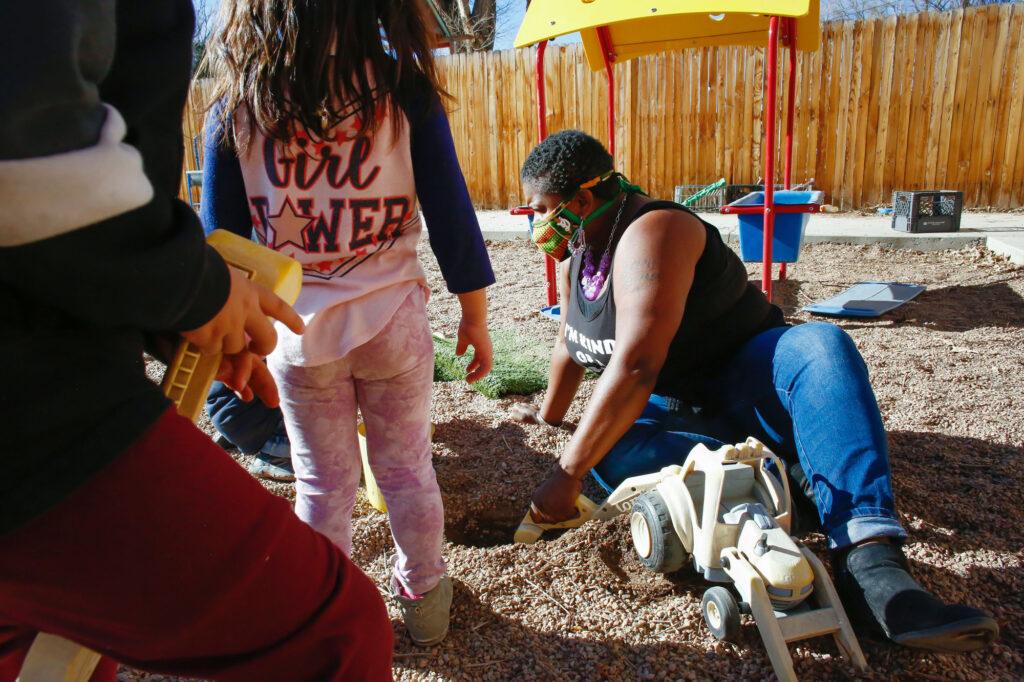
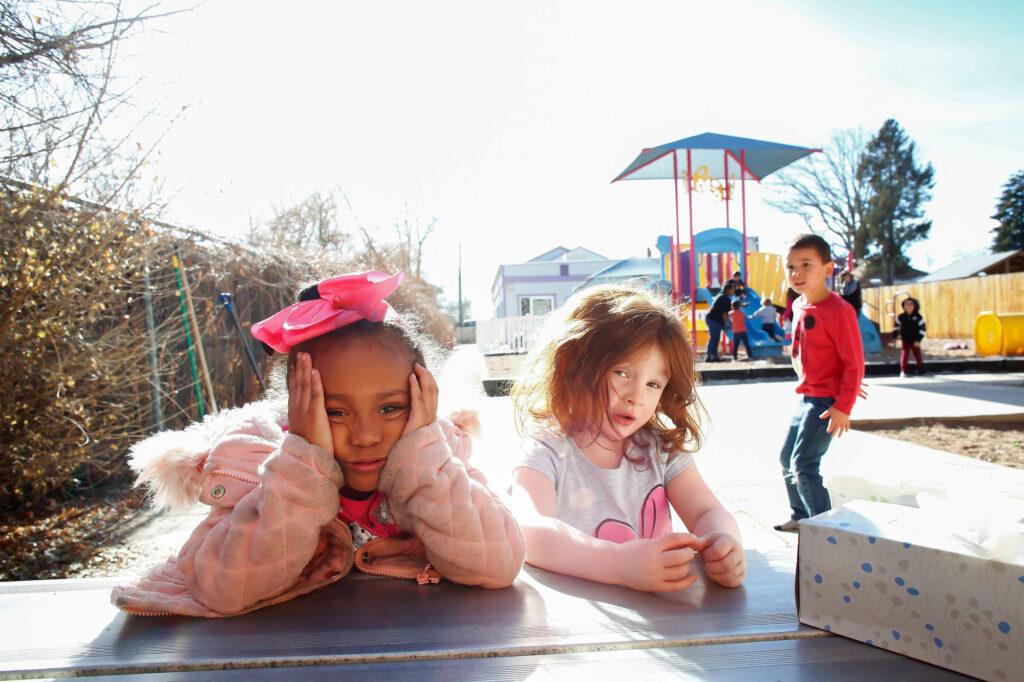
The program tends to attract people who need to be working and non-traditional learners.
Vivian Darby fits the bill. She’s been on “quite the little journey” since she left high school without graduating in 2002.
She got her GED in 2004 (“The math test took two times, the writing test about three,” she said.) and after several years of study, Darby got credentialed in electrical construction management.
She went from public assistance to “the money was like ‘Woohoo!’” she laughed, “I think I’m rolling in the dough!”
But she got laid off. Then she got a diploma from Pima Medical Institute in dental assisting and radiology and worked for a time in dentistry. The job was OK, but not her passion.
“This is where the excitement comes in,” said Darby, with the flair of a storyteller, as she readied to talk about the career change that landed her in the job she feels she’s meant to be in.
Her mother ran into her best friend from high school, now the owner of Oak Street Child Development Center. The owner was looking for staff. Darby checked out the place and immediately saw “all the love that I could be giving.” She took an entry-level job in 2012.
Darby took a few classes here and there to move up the ranks of Colorado’s early childhood educator credentialing system, one of several pathways to become a teacher. But Darby wanted more.
“It was like, ‘OK, Viv this is clearly you. I feel like where you need to get now, is you need to be informed. You need to know how to provide quality care to these children.’”
That meant more schooling.
Darby is smart, funny, and intuitive. But by her own admission, she’s not the best book-learner.
She was nervous about going back to school once again. Darby also had two daughters to support. But her motivation was sky-high. She wanted to be certified at the director level and be able to mentor others. For Darby, who is Black, that helps another statewide goal: to increase the diversity of early childhood education professionals, particularly at the director level where more workers are white.
“I was literally at the point where like, ‘I got to go to school. That's just what I got to do.’ Oh man, but I don't want to go to school anymore, but I do want to take in the knowledge and information!”
In the apprenticeship model, students set up their own learning plan. That’s because they’re coming into the field with different levels of experience. Red Rocks Community College’s Julia Brink said people tend to have a lot of education in one area.
“They might know a lot about developmentally appropriate practices, so how children learn, but they don't know a whole lot about families,” Brink said. “They don't know a whole lot about culture. They don't know much about running a program or how programs operate. They don't know how to be professional. They don't know about cognitive brain development.”
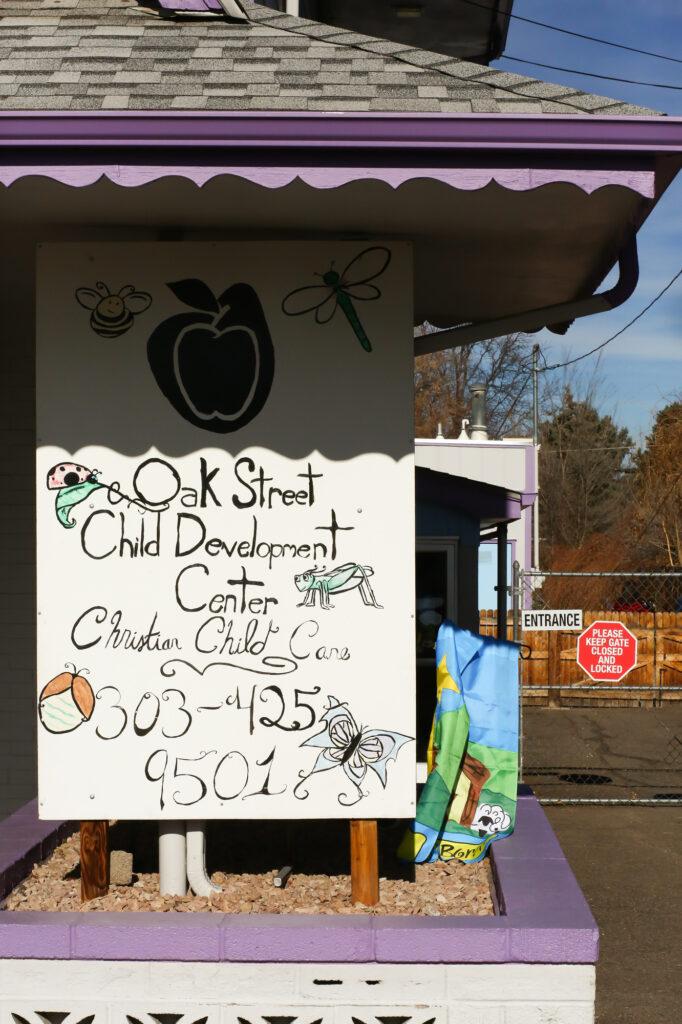
Darby met with an early childhood workforce specialist and was able to choose training and classes she wanted and needed. Darby brought in 2,313 hours of previous experience and 168 hours of education to help her meet the educational and work requirements for the apprenticeship.
College classes are expensive. So, the program’s counselors point students to free early childhood classes offered through the state and local early childhood councils. There’s even flexibility. Darby had to take a break from the program at one point to take care of some personal matters. She was able to return and pick right back up where she left off.
Apprentices receive a wage increase from their employer every six months, no less than $0.50 an hour each time. If they stay in the college’s apprenticeship program for two full years, that’s a $2 raise.
The extra money didn’t hurt. After her apprenticeship, as a lead teacher, Vivian Darby was earning $15.50 an hour.
Brink said she’s not had any employers object to the wage hikes because they are getting high-quality support in return.
“[Apprentices] are making a commitment to a lot of hours of education and a lot of time, and they see their employers willing to make a commitment to them, and then they're making a commitment to their employer. So, we're getting that consistency,” Brink said.

One of the biggest advantages to an apprenticeship is working with a mentor-coach, in Darby’s case, the owner of the center, on a regular basis. The owner tracked every class and seminar Darby took, frequently working alongside her and providing feedback.
“She didn’t sugarcoat things,” Darby said. “She knew if I needed direction, like ‘Well that didn’t go well for me. How could I change it?’ She was great, great, great.”
If Darby didn’t get the answers she needed, the apprenticeship program has several people ready to offer support and answers.
Jessica Nanez, recently named new director at the Oak Street Child Development Center, said the apprenticeship had a positive impact on the whole center by allowing Darby to realize her leadership potential.
“Since being in this program I just see so much potential in Vivian,” she said. “Her professionalism is just tremendously different than before and it’s great.”
Darby has since been promoted to assistant director and is nearing graduation for her associate’s degree in early childhood education.
Brink said she believes the on-the-job support is key in helping stem Colorado’s chronically high turnover rates in early childhood education. A map produced by the University of Denver’s Colorado Evaluation and Action Lab on the state’s early childhood workforce shows the percentage of professionals in each county who changed jobs at least once in 2019. It’s high.
The job of an early childhood educator is also highly complex, studies show, requiring education, skills and competencies similar to K-12 teachers. Early childhood staff say they are increasingly confronting a wide range of behavioral issues without the specialists who are found in K-12. Teachers feel overwhelmed, without the skills and training to succeed.
“Then, in my opinion, what happens is we get burnout,” Brink said. “We get teachers that don't know what they're doing, or they're not confident.”
Burnout and feeling overwhelmed is a big driver of turnover, studies show. One in four early childhood professionals changed jobs in 2019.
“They [teachers] need somebody to stand side by side with them and say, ‘OK, you just learned this. This is how you put it into practice,’” Brink said.
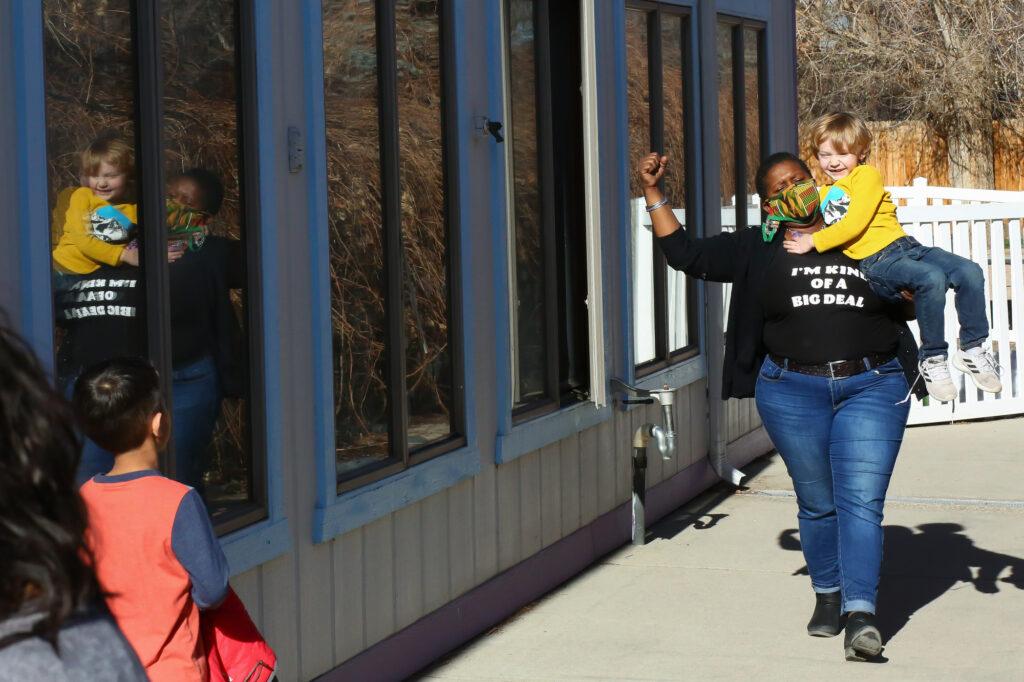
Plans are underway with workforce centers in Larimer, Weld, Arapahoe, Denver, Jefferson, El Paso and Adams counties to expand the apprenticeship and pre-apprenticeship program. The pre-apprenticeship allows participants to see if the field is a good fit before they make a commitment to the bigger apprenticeship program.
Apprenticeship isn’t necessarily the fastest method to become qualified to lead a classroom, but Brink said it’s one of the “stronger” methods.
“It solidifies all that you've learned,” she said. “And it's going to give you that confidence that you know what you're doing, right? So that makes a strong quality teacher, that makes them stick. That makes them feel confident that they know what they're doing and not just, ‘OK, I completed some education and now somebody's just going to leave me in a classroom with 10 to 20 kids by myself.’”
This story is part of a series produced as part of the Higher Education Media Fellowship at the Institute for Citizens & Scholars. The Fellowship supports new reporting into issues related to postsecondary career and technical education.
Photos by Kevin Mohatt for CPR News.







